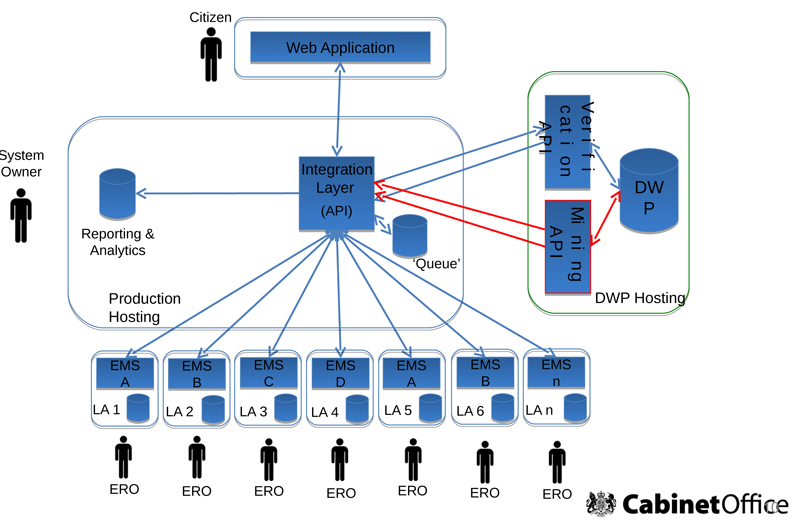Innovation in Decline
Innovation is needed to kick start the economy, but the old ways are holding back growth. The public sector has been hit by budget reduction. Large suppliers to the public sector are being squeezed in contract renewals and replacements. Nobody is demonstrating an appetite for investing in innovation or intrapreneurship.
The old, arcane, procurement regulations are another inhibitor. Invitations to tender published in the OJEU not only slow down the procurement process, they effectively bar entry from SMEs. SMEs are the very companies who are most likely to have entrepreneurial ideas and innovative products.
Ministers support SMEs, understanding that they dominate the wealth creating economy. For example, the Government ICT Strategy aims to:
“deliver policy and capability improvements covering EU procurement regulations; transparency in procurement and contracting; removing barriers to SMEs;”
But inertia in the Executive merely extends the status quo. SMEs with innovative ideas are not welcomed with open arms into the market place. SMEs are sidelined by Government with the complicity of the big suppliers – neither of whom have the appetite for the perceived risk of innovation.
One Example
DWP’s Universal Credit programme states:
“We estimate that £5.2 billion a year is wrongly paid out as a result of fraud and error: £2.1 billion of fraud and error in Tax Credits and £3.1 billion in Department for Work and Pensions benefits.”
An OJEU notice was duly published with a value of £15m to £45m for a “Data Access, Processing and Analytics Pan Government Framework”. Interested SMEs are informed that “Organisations expressing an interest are expected to have a minimum turnover of £9,000,000.”
Any young SME, believing that they have innovative technology to make a £ multimillions impact on reducing error and fraud, are immediately blocked. They are also unlikely to pass additional financial criteria. There’s a further off-putting condition: the envisaged minimum number of suppliers is 8 and maximum number of 12. SMEs are most unlikely to wish to spend valuable resources with virtually zero chance of jumping the pre-tender hurdles.
There’s also a sting in the tail: “DWP wishes to establish a framework agreement that may be used by or on behalf of UK public sector bodies.” This is not just central government, but also every local authority and even Channel 4. Does this now mean that they could also be disadvantaged from supplying throughout the public sector? All public sector bodies should be aware of the DWP negotiated framework, including it in any data analytics contract selection. The appointed framework suppliers will be in a monopolistic position and easily able to deflect innovative entrants into their market.
A start-up technology company, which may have developed a more effective fraud and error mousetrap, cannot enter the market. The best it can do is treat with the usual suspects for winning a framework contract and hope to become a sub-contractor. They may even risk being excluded from directly competing for any other contracts in the public sector.
Such is the fear in SMEs, that they dare not make such examples public. A group of SMEs had to report in camera to the Public Administration Select Committee. See their infamous report “A Recipe for Rip-Offs”.
Portfolio Planning
Every product or service passes through a life cycle of inception, growth, steady state and decline. In the public sector, it is convenient to map this into a matrix of service portfolios with four categories.
- Innovating for the future
- Transforming business processes
- Reducing transaction costs of customer facing operations
- Improving essential internal administration and services
There may be overlap of categories, but each should be allocated a percentage of total resources. If any drops to 0%, it is a most unhealthy sign. Large suppliers excel in Transformation, Operation and Administration but Innovation is where SMEs thrive. Innovation can be a threat to the income streams of big suppliers, so it needs special protection by the Government. Today’s innovation could become tomorrow’s transformation and eventually the key to efficient operation.
Message to Government Ministers
Support innovative SMEs with policy changes that will:
- Guarantee access to Department’s senior levels with a frequent opportunities to make proposals for innovations. Encourage proposals for cross-departmental funding of joint projects. Exclude big suppliers from the process, who already have access if they wish to innovate.
- Reserve some funds for small contracts with SMEs. Constrain contracts to strict time limits and learn from both negative and positive results.
- Monitor investment in the Innovation Portfolio across all departments. Communicate successes and recommend candidates for growing into transformational projects.


